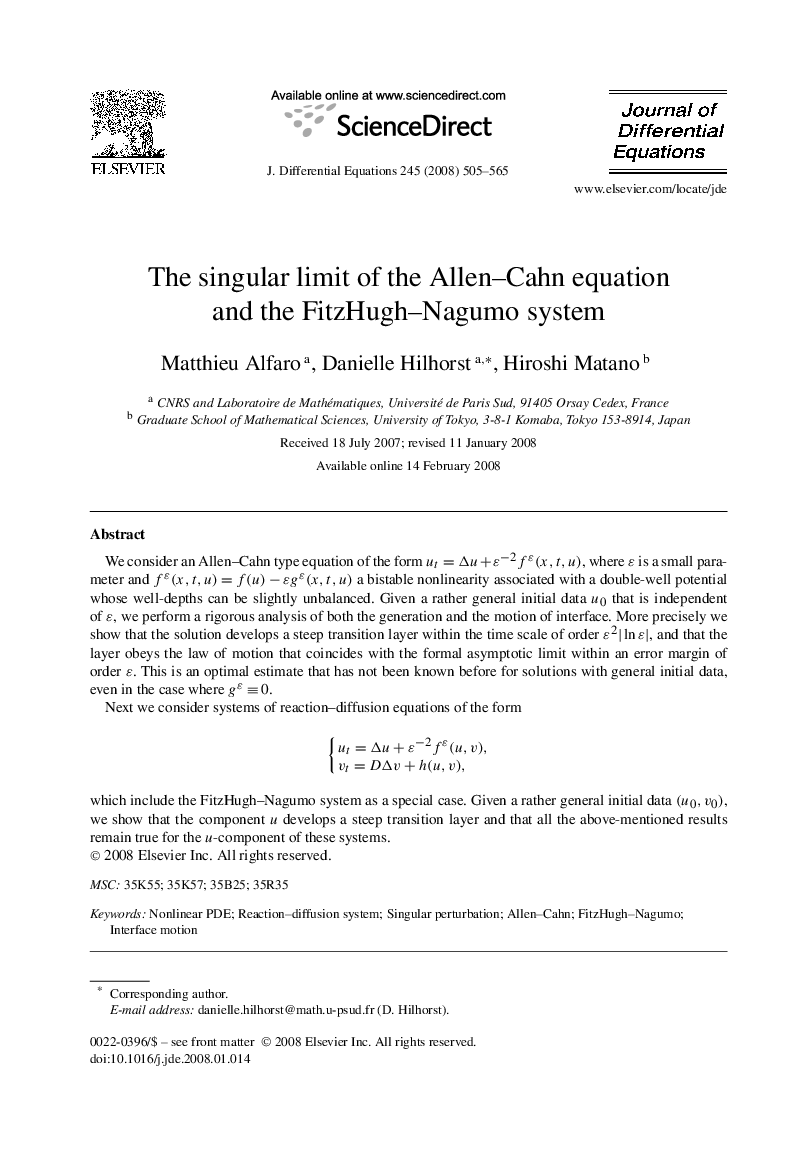| Article ID | Journal | Published Year | Pages | File Type |
|---|---|---|---|---|
| 4613082 | Journal of Differential Equations | 2008 | 61 Pages |
We consider an Allen–Cahn type equation of the form ut=Δu+ε−2fε(x,t,u)ut=Δu+ε−2fε(x,t,u), where ε is a small parameter and fε(x,t,u)=f(u)−εgε(x,t,u)fε(x,t,u)=f(u)−εgε(x,t,u) a bistable nonlinearity associated with a double-well potential whose well-depths can be slightly unbalanced. Given a rather general initial data u0u0 that is independent of ε , we perform a rigorous analysis of both the generation and the motion of interface. More precisely we show that the solution develops a steep transition layer within the time scale of order ε2|lnε|ε2|lnε|, and that the layer obeys the law of motion that coincides with the formal asymptotic limit within an error margin of order ε . This is an optimal estimate that has not been known before for solutions with general initial data, even in the case where gε≡0gε≡0.Next we consider systems of reaction–diffusion equations of the form{ut=Δu+ε−2fε(u,v),vt=DΔv+h(u,v), which include the FitzHugh–Nagumo system as a special case. Given a rather general initial data (u0,v0)(u0,v0), we show that the component u develops a steep transition layer and that all the above-mentioned results remain true for the u-component of these systems.
